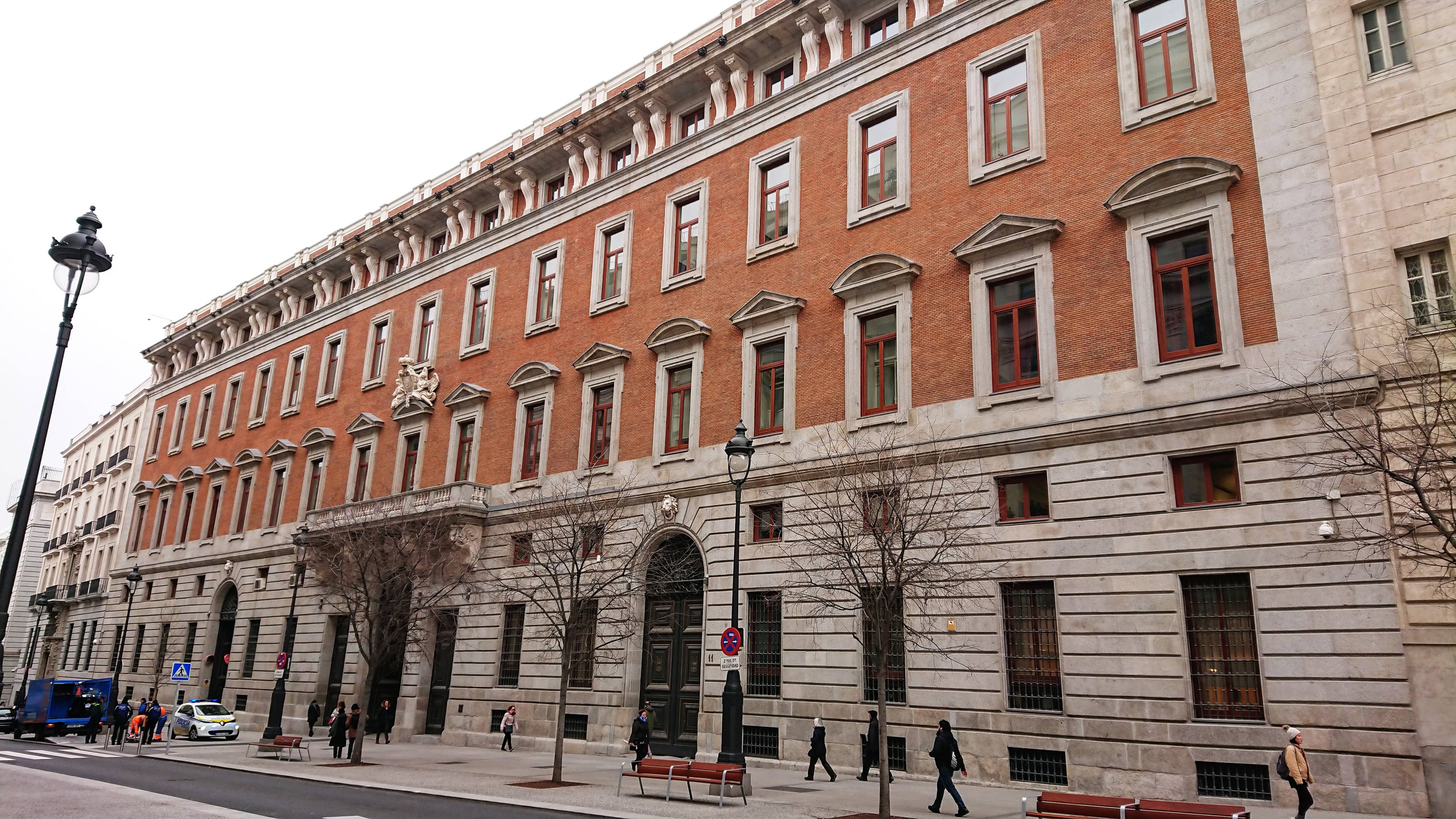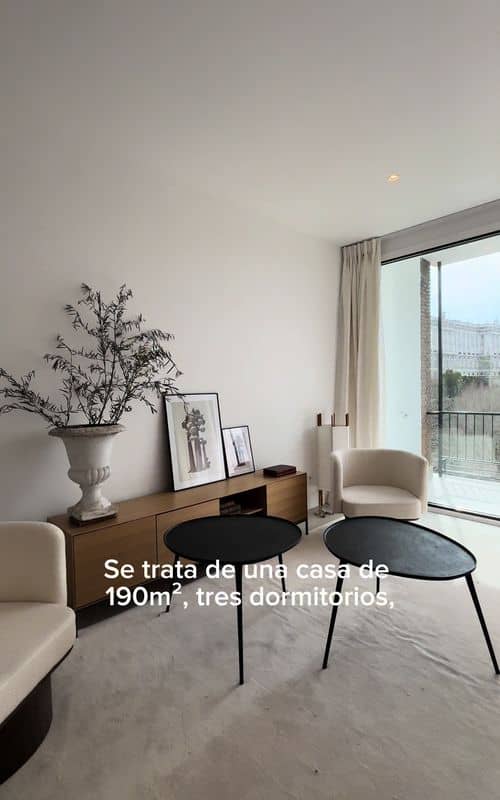Casa de la Real Aduana
An Italian court palace in Madrid, the Casa de la Real Aduana offers a glimpse into history with its grand architecture and preserved interiors.

Highlights
Must-see attractions

Social
From TikTok & Reddit
Best Time
Fewer crowds, more focused tours
Casa de la Real Aduana
Best Time
Fewer crowds, more focused tours

Highlights
Must-see attractions
An Italian court palace in Madrid, the Casa de la Real Aduana offers a glimpse into history with its grand architecture and preserved interiors.
"One of the most spectacular buildings in Madrid, an Italian court palace."
🎯 Book Guided Tours Early
Tours are essential for access and can book up. Use Reserva Patrimonio to secure your spot in advance.
👟 Wear Comfortable Shoes
The tour is lengthy and involves a lot of walking. Prioritize comfort for a better experience.
Highlights
Discover the most iconic attractions and experiences

The Grand Library
Interior
A spectacular and well-preserved space, this library is a highlight of the guided tour, showcasing the building's historical significance.

Basement Labyrinth
Basement levels
Discover the surprisingly extensive and well-preserved basements, which served as meeting points and bomb shelters during historical events.

Architectural Grandeur
Exterior and Interior
Admire the noble and colossal architecture of this Italian court palace, built during the reign of Charles III by architect Sabatini.
Plans like a pro.
Thinks like you
Planning Your Visit
Book Your Visit in Advance
Comfortable Footwear is Key
Best Times
Insider Tips
from TikTok, Instagram & Reddit
🎯 Book Guided Tours Early
Tours are essential for access and can book up. Use Reserva Patrimonio to secure your spot in advance.
👟 Wear Comfortable Shoes
The tour is lengthy and involves a lot of walking. Prioritize comfort for a better experience.
⏳ Allow Ample Time
Tours can last up to two hours. Be prepared for a comprehensive exploration of the building.
🏛️ Admire the Architecture
Appreciate the Italian court palace design by Sabatini, a significant piece of Madrid's history.
Tips
from all over the internet
🎯 Book Guided Tours Early
Tours are essential for access and can book up. Use Reserva Patrimonio to secure your spot in advance.
👟 Wear Comfortable Shoes
The tour is lengthy and involves a lot of walking. Prioritize comfort for a better experience.
⏳ Allow Ample Time
Tours can last up to two hours. Be prepared for a comprehensive exploration of the building.
🏛️ Admire the Architecture
Appreciate the Italian court palace design by Sabatini, a significant piece of Madrid's history.
💡 Engage with Guides
The archivists and librarians offer deep historical knowledge. Ask questions!
What Travellers Say
Reviews Summary
Visitors consistently praise the Casa de la Real Aduana for its spectacular architecture and the fascinating historical insights provided during guided tours. The well-preserved library and extensive basements are frequently highlighted as major draws. While the tour duration and walking can be demanding, the knowledgeable guides and the building's grandeur make it a highly recommended experience for history and architecture enthusiasts.
"One of the most spectacular buildings in Madrid, an Italian court palace.
Brutal"
Fernando Anayet
"We visited the Royal Customs House building, which currently houses the Ministry of Finance. We booked the guided tour through Reserva Patrimonio and it was very interesting. It dates from the time of Charles III and was built by the architect Sabatini. In 1936, the basements were used for meetings and as protection from bombers. It's a labyrinth that's surprisingly well preserved and extensive. The library is also spectacular and well worth a visit."
M Luquerodri
"Grand building from the time of Charles III. Noble and colossal architectural piece. Can it be visited?"
Jesús Ruiz
What People Like
What People Dislike
Frequently Asked Questions
🚇 🗺️ Getting There
The Casa de la Real Aduana is centrally located in Madrid. It's easily accessible by public transport, with several metro stations nearby, including Sol and Gran Vía. Many visitors also find it convenient to walk from other central Madrid attractions.
Parking in the immediate vicinity can be challenging due to its central location. It's recommended to use public transportation or a taxi. If driving, look for public parking garages in the surrounding areas.
Generally, access to the interior of the Casa de la Real Aduana is through guided tours. Independent visits are not typically permitted. Booking a tour is the best way to see the building.
From Madrid-Barajas Airport (MAD), you can take the Metro (Line 8 to Nuevos Ministerios, then transfer to other lines towards the city center) or an airport express bus. Taxis and ride-sharing services are also readily available.
While the exterior is accessible, the interior tour, especially the basements, may present challenges for those with significant mobility issues. It's advisable to inquire directly with the tour organizers about specific accessibility during your planned visit.
🎫 🎫 Tickets & Entry
Tickets are exclusively for guided tours and must be booked in advance through the Reserva Patrimonio website. Availability can be limited, so booking well ahead of your desired date is highly recommended.
Tour times vary and are subject to availability. It's crucial to check the Reserva Patrimonio schedule for specific dates and times when booking your tour.
Yes, there is a fee for the guided tours. The cost is typically reasonable and covers the expertise of the guides and the maintenance of the historical site. Check Reserva Patrimonio for current pricing.
It is highly unlikely to get tickets on the day of your visit as tours are often fully booked in advance. Booking online through Reserva Patrimonio is the only reliable way to secure entry.
The guided tours at the Casa de la Real Aduana typically last up to two hours, offering an in-depth exploration of the building's history and architecture.
🎫 🏛️ Onsite Experience
Tours offer a fascinating glimpse into the building's past, including its grand library, extensive basements used as shelters, and impressive architectural details from its time as a royal customs house.
Photography policies can vary. Generally, personal photography for non-commercial use is permitted, but it's always best to confirm with your guide at the start of the tour.
Originally built as a royal customs house during the reign of Charles III by architect Sabatini, it has also served various administrative functions and its basements were used as shelters during historical conflicts.
There is no strict dress code, but comfortable attire and footwear are highly recommended due to the duration and walking involved in the tour.
The library is a significant part of the guided tour and is usually accessible as part of the scheduled visit. Its preservation and grandeur are often highlighted by guides.
🍽️ 🍽️ Food & Dining
The Casa de la Real Aduana itself does not typically have dining facilities for visitors. However, its central Madrid location means you are surrounded by numerous cafes, tapas bars, and restaurants offering a wide range of culinary options.
It's generally advisable to consume food and drinks before or after your tour. Policies on bringing them inside may vary, but it's best to err on the side of caution to respect the historical environment.
The area around the Casa de la Real Aduana, being in the heart of Madrid, offers everything from traditional Spanish tapas and paella to international cuisine. You'll find options to suit every taste and budget.
Given its proximity to Puerta del Sol and Gran Vía, there are countless dining options. Exploring the side streets can lead to authentic tapas bars and traditional eateries.
Absolutely. The central location makes it easy to grab a quick coffee, pastry, or a light meal at one of the many establishments nearby before or after your scheduled tour.
📸 📸 Photography
The exterior architecture itself is very photogenic, especially the grand facade. Inside, the library and the intricate details of the historical rooms offer excellent photographic opportunities.
Photography for personal use is usually allowed, but it's essential to confirm with your guide at the beginning of the tour. Be mindful of other visitors and avoid flash photography in sensitive areas.
A versatile lens, such as a 24-70mm equivalent, would be useful for both interior shots and capturing the building's scale. A wide-angle lens can be great for interiors, while a prime lens might be good for low-light library shots.
Drone usage is strictly regulated in urban areas like Madrid, especially around historical buildings. It is highly unlikely to be permitted and would require special authorization.
Morning light can be beautiful for the exterior, while afternoon light might offer softer illumination inside. However, as tours are scheduled, you'll work with the available light during your visit.
For Different Travelers
Tailored advice for your travel style
👨👩👧 Families with Kids
However, older children who have an interest in history or architecture might find the stories about the building's past, especially the use of the basements as shelters, quite engaging. The library's grandeur could also capture their imagination. It's recommended to gauge your child's interest level and ensure they are prepared for a longer, more stationary experience.
🏛️ History Buffs & Architecture Enthusiasts
The guided tours are particularly valuable, offering access to spaces like the impressive library and the labyrinthine basements. The opportunity to learn from knowledgeable archivists and librarians provides a deep dive into the building's significance. The preservation of these historical elements makes it a must-visit for anyone passionate about architectural history.
🚶♀️ Day-Trippers in Madrid
Key tip: Since tours are the only way to enter and require advance booking, plan this visit into your day by securing tickets beforehand. Allocate at least 2-3 hours for the tour and travel time to and from the location. It offers a unique historical perspective away from the more crowded tourist hotspots.
Deep Dives
In-depth insights and expert knowledge
The Architectural Legacy of Sabatini
Sabatini's work in Madrid is extensive, and the Aduana building showcases his signature style: a blend of classical grandeur with practical considerations. The building's robust construction and elegant detailing speak to its original purpose as a vital hub for trade and revenue collection. Visitors often remark on the noble and colossal nature of the architecture, appreciating its historical context and aesthetic appeal.
Beyond its aesthetic value, the building's historical use is equally compelling. Its basements, in particular, have a layered history, having been utilized for various administrative purposes and even as shelters during times of conflict. This duality of function – from a symbol of royal power and commerce to a place of refuge – adds a unique dimension to its narrative.
Exploring the Historical Depths: Tours and Discoveries
A significant highlight of the tour is the spectacular library, a space that has been remarkably preserved and is a testament to the building's past intellectual and administrative importance. Equally fascinating are the basement levels, which reveal a surprisingly extensive and well-maintained labyrinth. These subterranean areas have served multiple purposes throughout history, including as meeting points and protection during bombings, adding a layer of intrigue and historical weight to the visit.
Visitors consistently praise the excellent treatment received from staff, noting both the security measures and the helpfulness of those assisting them. However, some reviews mention that the tour's two-hour duration can be lengthy, with a suggestion for more seating options for those who might need them. Despite this, the overall consensus is that the guided tour offers a valuable and memorable insight into Madrid's historical architecture and past.




Social
from TikTok, Instagram & Reddit